What is LASIK Surgery?
LASIK (Laser In-situ Keratomileusis) is a type of refractive surgery used to treat myopia, hyperopia, and astigmatism. This procedure helps to alter the shape of the cornea, enabling light to enter the eye and be properly focused onto the retina. This allows clearer vision, reducing or eliminating the need for glasses or contact lenses.
How does LASIK correct myopia (short-sightedness)?
The excimer laser is used to reduce the power of the cornea so that light rays will not bend as much, and the focal point is then shifted from in front of the retina onto the retina surface instead. This will allow images from a distance to be sharp.
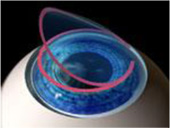
Step 1
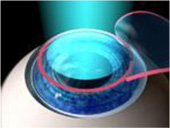
Step 2
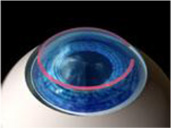
Step 3
How does LASIK correct hyperopia (long-sightedness)?
The excimer laser is used to increase the power of the cornea so that light rays are bent more, and the focal point is then shifted from behind the retina onto the retina surface instead. This will allow images from far and near to be sharp.

Step 1
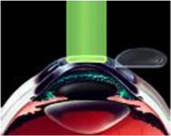
Step 2
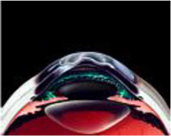
Step 3
How does LASIK correct astigmatism?
The excimer laser is used to reshape the cornea, by evening out the contour to be more round, like changing the shape of a rugby ball to that of a soccer ball.
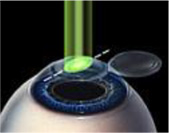
Step 1
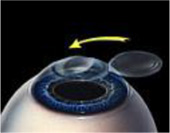
Step 2
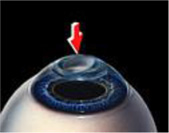
Step 3
LASIK Surgery procedure
The LASIK procedure typically takes about 25 minutes for both eyes. Improved vision (without corrective eyewear) is achieved very soon after surgery, usually overnight.
Your eyelids will be cleaned and anaesthetic eye drops will be administered into your eyes to prevent pain.
You will be guided into the laser room where a laser is used to create a protective flap in the cornea.
You will rest for a while in order to allow the bubbles under the flap to clear.
Next, the cornea flap is gently lifted back and laser treatment is used to correct the degree of the eye. The laser beam reshapes the cornea based on an individual’s required vision correction.
-
During this, your eyelids will be held open by a springy device during the laser treatment and you will be asked to fixate your vision on a light.
(Note: The surgery is painless and does not take long) The protective flap is then repositioned into place and allowed to heal.
You will rest your eyes at our recovery area for around 30 mins before a final check is done. After the surgery, it is advised that you go home and rest.
Video Courtesy of ZEISS
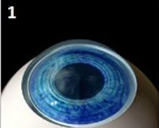
Step 1
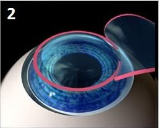
Step 2
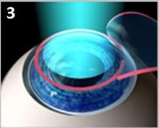
Step 3
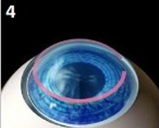
Step 4
Am I a good candidate for LASIK?
You will need to go through a comprehensive pre-procedure assessment, where our Optometrists and Ophthalmologist will check your eyes thoroughly in order to determine your suitability for LASIK. Here are some factors to determine your suitability:
-
Has your vision been stable long enough to have LASIK Surgery?
If your spectacle power is still increasing, it would be advisable to wait till it stabilises.
-
Do you participate actively in contact sports?
Activities which increase the risk of trauma to the eyes, for e.g. martial arts, would increase the risk of LASIK flap dislocation. Fortunately, the PRK (advanced surface ablation) techniques avoid this risk and may be more suitable under these circumstances.
-
What is your corneal shape and corneal thickness?
Patients that have evidence of Keratoconus (weak, coned-shaped cornea) are not suitable for LASIK. This is a condition where the cornea becomes thinned out and weakened causing unusual astigmatism and poor vision. in these cases, implantable collamer lens (ICL) would be a better/safer option.
-
Are you currently pregnant or breastfeeding?
Hormonal changes, change in corneal tissue properties and fluid retention can cause vision fluctuations in a woman who is pregnant or currently nursing. To have the best PRK, LASIK and other types of vision correction surgery results, it is advisable for a woman to undergo the procedure at a time when a women is neither pregnant or breastfeeding.
-
Do you have dry eyes?
If you have an existing condition of dry eyes, you may be advised to have that treated prior to vision correction surgery (e.g. PRK, LASIK etc.) – since the quality and the quantity of tears you produce are factors in the development of dry eyes and can also affect healing after eye surgery. In addition, good LASIK outcomes may depend on controlling dry eyes.
LASIK Fees for Dr Gerard Nah
| Assessment (Consultation and Investigation) | $200 |
| LASIK Surgery | $4,300 |
| TransPRK Surgery | $4,300 |
| Soft Touch PRK Surgery | $4,300 |
All Fees are before adding GST and do not include medicines and consummables.
Find out even more about LASIK and other methods of Vision Correction Surgery at the following links: